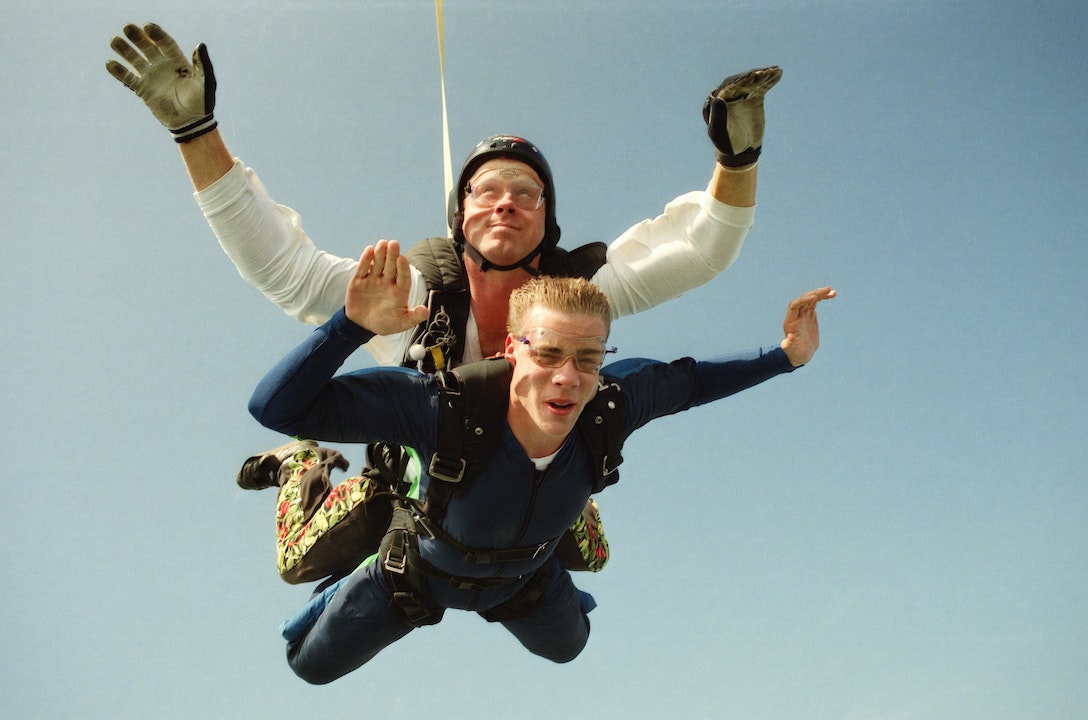Do we really need an Excitement for our life? Understanding psychology is a critical component of being a successful marketer. What I’ve discovered is that the most significant advances in content marketing don’t come from “hacks,” “tricks,” or “techniques,” but from science-based psychology. One of the most potent and exciting areas of psychology deals with excitement. How can content marketers inspire people? How can they increase their emotional engagement to achieve content engagement? Is there a way to get more comments, shares, likes, and content marketing KPIs? The answer is yes. The psychology of excitement shows us how.
Excitement is a feeling or situation full of activity, joy, exhilaration, or upheaval. One thing about excitement — it sure isn’t boring.
https://www.vocabulary.com/dictionary/excitement
How does excitement work?
To understand the impact of excitement on marketing, we first need to know how excitement works. Here are some of the main features of excitement. Excitement is mental, but it affects the whole body. Excitement, like other emotions, starts in the brain. But emotions have robust physiological responses.
Many people are familiar with experiencing gut sensations (“butterflies in the stomach”), trembling, weakness, and sweaty palms in response to states of anxiety or excitement. The body’s complex response to Arousal is the state of physiological arousal. ChangingMinds.org explains what happens when we get excited:
Arousal typically occurs when the body stimulates emotions and releases chemicals into the brain that act to reduce cortical function and conscious control, producing physical arousal and ‘behavior’. . The endocrine system stimulates various glands, especially adrenaline, increases the flow of oxygen and glucose, dilates the pupils (allowing better vision), and suppresses non-urgent systems such as the digestive and immune systems.
Arousal spreads through the sympathetic nervous system. It has effects such as increasing heart rate and respiration to enable physical activity and sweating to cool the body. Excitement is temporary. The human body is constantly trying to maintain a state of homeostasis, that is, a stable state. The mind and body are regularly exposed to changing conditions such as temperature and pressure fluctuations. Despite all the changes, the body can dynamically adapt to maintain homeostasis. Excitement disrupts homeostasis, but only temporarily. Since the body is constantly returning to homeostasis, true wakefulness (in the biological sense) can only last for a limited time. How long? It all depends on the level of excitement.
A Wall Street Journal article said it took him 20 minutes before the excitement subsided. Excitement makes people more likely to take action. When your body gets excited, it creates the perfect conditions for your marketing to be effective. Excitement of any kind is an excitable state.
Arousal means that your heart rate increases, your sympathetic nervous system increases activity, and your brain begins to signal increased hormone production. When people get excited, their emotions can become more robust and affect their decision-making ability. Eager people are more likely to make any decision, even a bad one. Excitement leads to impulsiveness.
In The Psychology of Social Shopping, Paloma Vazquez summarizes this point. The emotional state trumps rational thinking. It’s easier to sell when consumers are excited. That might be a good thing. As marketers, we generally want people to act without overthinking. Quick decision-making can be critical in guiding someone through the buyer’s journey.
What helps create excitement?
With a basic understanding of how emotions work, you can discover how content can create excitement. Here are our broad categories of exciting content: strong feelings. There is consensus on this point. Users are passionate about emotional content. They deal with it passionately, intensely, and automatically. Relevance said: Humans are emotional creatures. We make decisions and act (including purchasing decisions) primarily based on our emotions. So if your marketing content tries to reach your audience only through rational approaches, it’s likely to fail.
How do you deal with excitement?

Are you lost in excitement? It’s great to get excited about something that happens in your life, such as being invited to a big dance by someone you love or being hired for a job you recently applied for. Learn some valuable things.
1.Forget the excitement and have fun. Immerse yourself in a challenging video game. Throw the ball to the dog. Take a bike ride with your younger siblings. Watch lots of funny YouTube videos. Catch up on this new show on Netflix. Enjoy the fun of the good old days.
- Transforming excitement into positive and joyful behavior is an effective way to calm down and change your mind from what was upsetting.
- Researchers say that people who don’t enjoy playing are more prone to crime, obesity, and lack of creativity. Work your time.
2.Be artistic to distract yourself from what is upsetting you. There are many ways to distract yourself, healthy or otherwise. Using excitement for creative purposes is a productive and healthy way to spend your time.
- Your creative possibilities are limitless. You can take a pottery class. Write a short story, poem, or song. Draw. Purchase a box of crayons and your favorite coloring book. Please draw a picture of your house. Grab your camera and try to capture interesting photos of everyday household items.
- Art makes it possible to release or direct the nervous energy within the body. Some people find it hard to put their excitement into words, but making art allows them to recreate that feeling tangibly.
3.Complete some tasks. Make it a chance to forget what makes you so excited about getting your hands dirty and moving. When you get home, list chores and errands to do and get started.
- Rake leaves, mow the lawn, wash the car, do the laundry, and dust the ceiling fan.
- Household chores probably aren’t at the top of your list of distractions. You’re not that funny. Still, much research has been done on the benefits of the task. Studies show that teens who complete various tasks tend to have a higher sense of responsibility, healthy self-esteem, and a more remarkable ability to deal with frustration.
4.Make your enthusiasm contagious by volunteering. When we are in a good mood, we have the power to lift the spirits of those around us. You can use your extra energy to make a positive impact on the lives of others.
- People unconsciously tend to imitate the moods of their fellow citizens. You can share positive energy while reading or crafting with nursing home residents, hospital patients, or children in a teaching group. You will benefit from your good mood and feel excited. have a positive way to release.
5.Taste what excites you. The best way to unleash excess energy is to do the things that have excited us all. Don’t rush to let the big day come early when looking forward to a new job or vacation. But there are some things you can do.
- For example, if you’re excited about starting a new job, being prepared can help you get through the excitement. You can find out more by looking up positions online. You can also go shopping for clothes that fit your new position.
- We can prepare it for you if you’re looking forward to your future vacation. Start planning your trip or plan different activities in your itinerary. You can learn more about the place by doing a cursory Google search. You can also make a list of what you need before you leave.
6.Take deep breaths to calm your emotions. Deep breathing is an effective way to focus and calm yourself. This exercise helps evoke the body’s natural relaxation response. This exercise can be done sitting, standing, or lying down.
- Begin with natural breathing. Then take four deep breaths through your nose. Hold your breath for about two counts. Then deflate your mouth for a count of 4. Repeat this exercise for a few minutes to promote calmness.
- You can also add mantras to your breathing activities. As you breathe, keep thinking, “I am an image of stillness.”
7.Meditate to control your awakening consciously. Mindful meditation can help calm the mind and reduce overexcitement. Meditation may sound boring, and you may find it impossible to sit still with excitement. Meditation can be difficult for beginners, but the benefits are far-reaching. Practicing this activity reduces stress, improves focus, improves mindfulness in everyday life, and minimizes mental chatter that interferes with productivity.
- Sit comfortably on a chair or cushion. Breathe slowly and deeply Orient yourself to the present moment by paying attention to the different sensations around you.
- As you inhale, think about the sounds you hear and how your body feels in your chair, and focus your attention on the wall in front of you. When your watch gets distracted, refocus.
8.Visualize yourself in a calm or relaxed state. Your visualization should direct your attention to where you can relax and settle down. As with many of these calming techniques, the benefit of visualization is that its effects go beyond relaxation. This mental exercise can also improve motivation, and physical performance, increase self-confidence and prepare your brain for success. Sit. Inhale deeply and exhale. Close your eyes and imagine a quiet place. This can be a real-life location or an imaginary location such as an exotic beach or quiet stream.
- Activate your senses to perceive smells, tastes, sounds, and physical sensations associated with your place of rest.
- You can also listen to guided visualization exercises where the speaker guides you through the images. Find visualization exercises on YouTube or easily download them from health and stress management websites.
9.Exercise releases nervous energy and calms you down. Happy excitement can also cause mental and physical stress. Any physical activity engages the mind and body and creates a state of calm afterward. I can do it.
- Try walking or running for about 20 minutes. This may seem like a short time, but it doesn’t take a lot of practice to reduce stress.
- You can combat extreme mental chatter by doing more strenuous exercises, such as a. B. Play sports, high-intensity interval training, or power yoga.
10.Get outside, get some fresh air, and change your perspective. Being indoors makes it harder to distract yourself from what’s been upsetting you. Take a break from what you are doing and get out into nature.
- Spending time outdoors really only makes people happy. Even a short walk in nature has been scientifically shown to reduce depression, improve your outlook on life, improve your body’s ability to fight disease, and increase your focus (this is now true). It will be available soon).
- You can decide whether to go out by yourself or invite a friend to entertain you. Couples can walk in the park or throw a ball in the backyard.
11.Listen to music and dance to whatever excites you. You can listen to soothing music to soothe your excitement while you perform another task. Or you can turn on something fun and get up. Jump, clap, scream, dance.
- Dancing to music and moving your body releases the feel-good endorphins with exercise.
- But you can also benefit from exhausting your body to combat over-arousal. After a fun dance session, you may want to take a quick nap.
What is your opinion on this issue? Have you had a different experience? If you are looking to enjoy your life as much as possible, we recommend reading the “How to Enjoy Life? Learn 25 Practical Ways” article.








